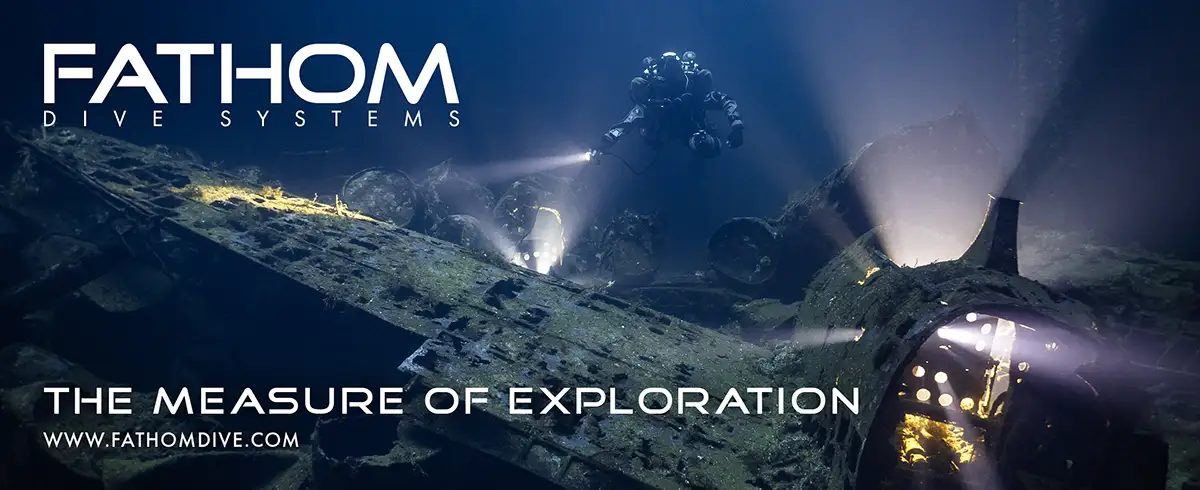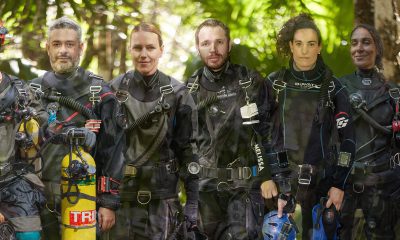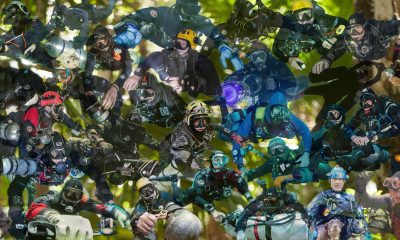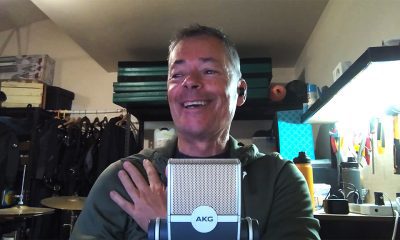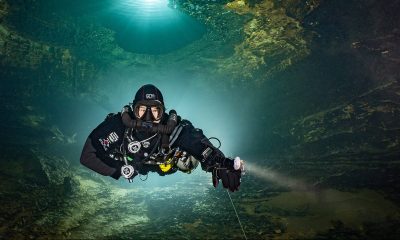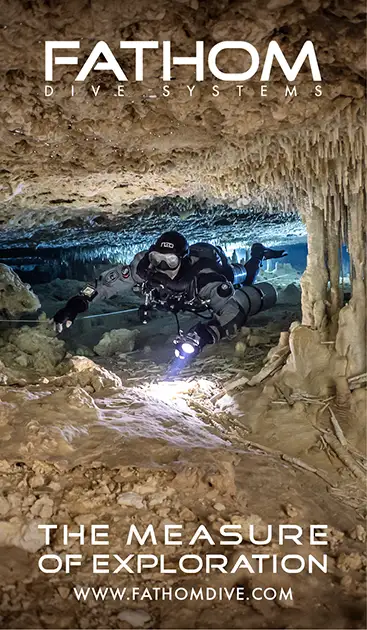Community
The Who’s Who of Sidemount

Woody Jasper
Pioneering cave explorer Woody Jasper is considered by those in the know as the inventor, or grandfather of Florida-style sidemount diving. The soft spoken explorer said that he got the idea in 1982 after getting stuck in a restriction in Bathtub Spring wearing double back-mounted 72s. Worse: The switch on Woody’s butt-mounted primary got shut off as he squeezed sideways through a tight spot in the cave, and he couldn’t reach his backup lights, so he was stuck in the dark. Eventually he was able to extricate himself and drive home.
He had just purchased a copy of Martyn Farr’s “The Darkness Beckons,” and spent the next week pouring through pictures of Cave Diving Group (CDG) divers. “I looked at every picture,” recalled Woody, “and nothing looked right.” Within a few weeks, he designed a single tank no-mount rig with a Y-Valve and a stage, which he took diving. Within months he had developed a rudimentary two-tank sidemount system, which his peers Wes Skiles, Lamar Hires and Mark Long, and later Tom Morris and Ron Simmons, soon adopted and began evolving. The new system enabled them to explore caves that explorers with back-mounted doubles, like legendary Sheck Exley, couldn’t access. “Woody was the first to realize that we needed to pull the neck of the cylinder in tight, snug into the armpit to get through the really tight places,” explained Lamar Hires. “He used a bicycle inner tube across his back to pull the tanks in tight. Today, we use a bungee to do the same thing.”
But while his peers got into the business of teaching and running dive companies, Woody decided to take a different approach with his diving. The underground gray beard smiled when I asked him if had also worked as an instructor. “When you take what you do for fun, and start doing it for work, it becomes work,” Woody, who had a 30-year career in industrial water treatment, explained. He remains an active cave explorer to this day.
Interview by Michael Menduno
What is sidemount to you?
When I first started cave diving I was older than most of the participants and had suffered from a serious case of arthritis. So I was using a stage bottle for a crutch to get to the water and things like that. For me, going deep, going deep on air had proven to be a bad idea. I got started in about 1980 and so realized going a really long way, wasn’t me either. I had made a dive with Bill Main the day after he and Sheck Exley had set a new world record of 6600 feet (2,012 meters) in Manatee. And I had been an explorer in a variety of other ways my whole life, but going real far and going real deep seemed like outside the scope of what I had to give. What that left for me was small places. So, what sidemount meant to me was going where no one had gone before without a terrible decompression penalty or huge risk with multi-stage setups to set up the push dive. You know, it got ridiculous at some point on open circuit.
So back to 1980, that’s when you first started developing sidemount systems? I know you worked with Lamar on that, right?
Well, probably 1981 or 1982 for sidemount.
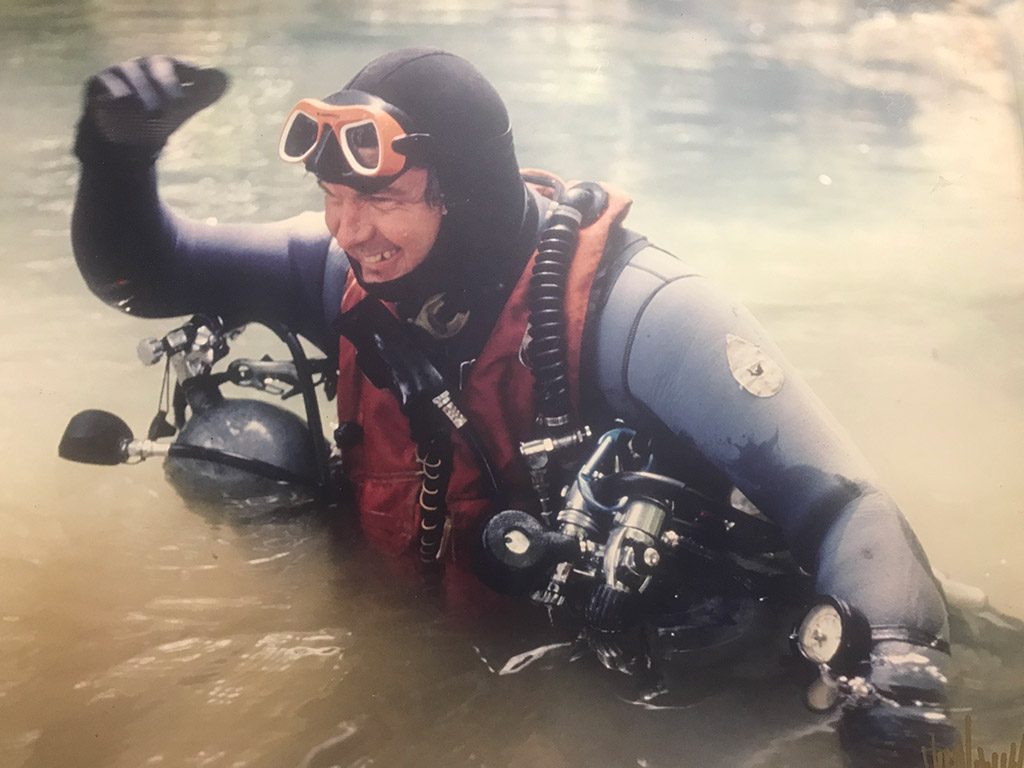
And in general, do you think sidemount is still evolving? Do you think there are still improvements to be had or do you think it’s pretty much where it is and should be?
Well, I’m not up on the cutting edge of sidemount which is… dual rebreathers? I guess that would be the cutting edge right now.
That is definitely a trend on big dives.
Yeah, maybe it’s gone past that, but dual sidemount rebreathers seem like the way that you get by without having to tote all the extra safety bottles and taking a whole lot of clutter, which is really, ultimately, what you’re trying to get rid of in a good sidemount system.
I know a couple of people who dive twin sidemount Liberties and they are just like, this is the ideal. You have a massive amount of gas capacity.
Yeah. Forever.
Did you ever have an epiphany moment on sidemount, maybe when you first started that just changed everything?
Well, the inspiration to do it came from a little cave on the Suwanee River, Sandbag. It’s a fairly small shallow cave. So Sheck had put a couple hundred feet of line in it and I went back on a little solo dive and had been able to push a little further. A real wide, low area, and beautiful crystal clear water. You could look through this wide, low area and see more open or bigger caves beyond it, so I had a real trim set of 72 back mounts. I had butt mounted my light so that it wasn’t an additional thought. And I wormed in a couple places with this rig and it worked pretty well. But I got stuck trying to worm my way through to this next section of caves.
My light switch was mounted on my battery pack and that got turned off by squirming around. And my backup lights were mounted with the clips down at my waist with the light head sticking up on the straps so I couldn’t get to them. So, I was 12 feet (3.6 meters deep), which sucks. I sat there in the dark for probably five minutes without moving, just kind of relaxing and waiting for slack to reveal itself somewhere. My hero, the magician Harry Houdini said there is always slack somewhere. So, I got to wiggling around and found some and got flipped around and wiggled my way back out. All the way home I’m determined I’m going to find my way to this new cave.
When I got home I got out Martyn Farr’s book, “The Darkness Beckons” which had just come out. I had had it for about a week or two.
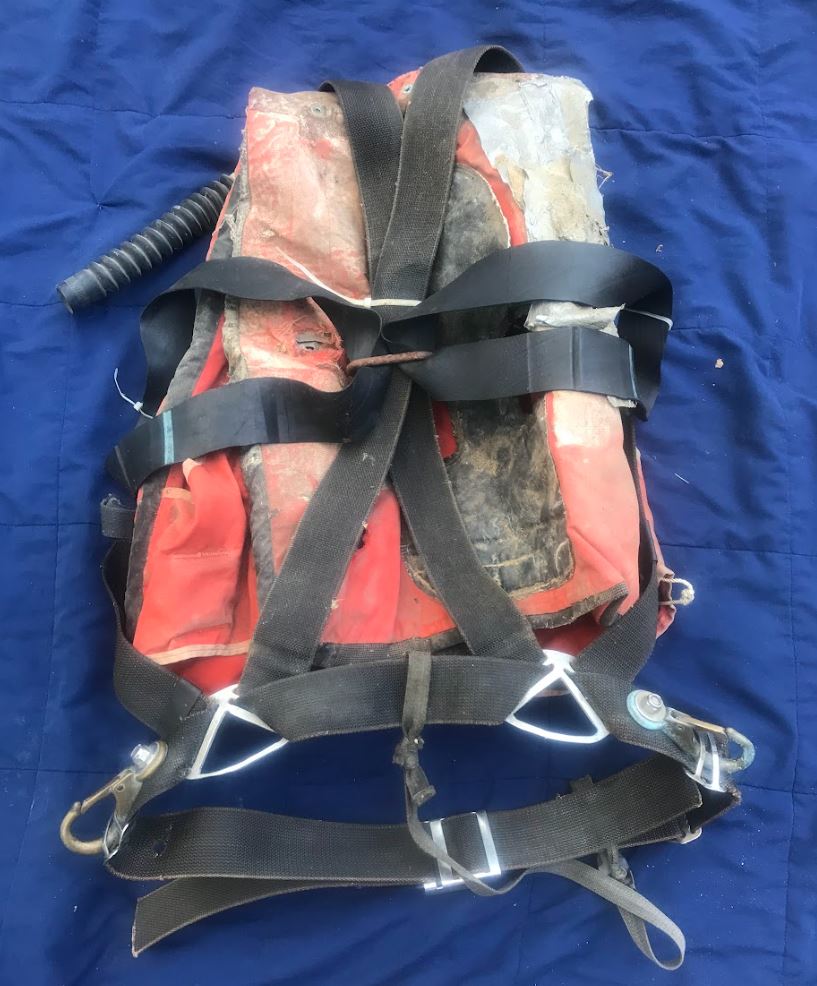
I sat down and looked at every photograph in the book and I was like, well this is just all clutter. I’m sorry Brits, but you just didn’t think this through. So I decided…Actually, my very first approach at sidemount was “no mount.” I used a single 72 with a Y valve. And then you add the second tank as a stage bottle. So you take the second tank off and you go to your Y valve and then you go to no mount. And there you had the system.
But then after a while it just became handier to never take the second tank off because there aren’t any places that you needed to take it off to pass, except for a little tube. I’ve gotten into tubes I couldn’t get through with my BC on and had to go take the BC back off.
Tight spaces.
You go into that one backwards, feet first.
I think of you, Lamar, and Wes as, at least in the US, as “The Fathers of Sidemount.” Obviously, the Brits had developed a sidemount approach, but you and the guys took it to a new level (see Rick Stanton’s interview). So how do you feel now almost 40 years later when it seems there are now more sidemount divers in Mexico than backmount divers. So how does that make you feel to see what your baby has grown into?
It would be almost egotistical to say it seems like I have many disciples.
Ha! See what you guys started!
Some of the people that really enjoyed sidemounting have become really proponents. They sell the program as something that lets an older diver stay in the water a little longer without packing 100+ pounds/45+ kg of gear. But really, it’s a tool to get where you can’t get with doubles. Although it really has expanded way beyond that to just be a pretty universally pretty handy way to dive. It’s very stable and when you’re balanced right you can swim on your side, swim upside down. I’ve done quite a bit of floating around in various positions.
With our original doubles and a belly bag (for buoyancy), you didn’t dare get out of trim. You would go over. You would turtle. That’s the word for it. You turtled. So sidemount certainly has something that you could go head down, feet down, any position. A good sidemount system will let you be in complete zero gravity. Which is something that most double sets really don’t quite let you do because of the challenge.
I was talking to Edd Sorensen last week and he told me, “Even to this day people come up to me and say, you can’t do that in sidemount. I tell them nonsense. I can do anything you can do in sidemount. In fact, anything you can do in backmount I can do in sidemount, not a problem.
He’s right. In fact, you can even add a set of doubles to your sidemount rig. Ha! I ended up with a system that you would put a set of double hundreds on over your sidemount with a couple of rubber band clips. To remove it,
you just roll upside down, lay the double hundreds on the floor and unclip the clip here, and undo the one waistband, and swim away from the double hundreds. Of course, you can also add a couple of stage bottles. So, you could end up with 800 ft.³ of open circuit gas ultimately.
That’s a lot of gas! So with explorers like Sheck and Jim Bowden doing the big caves so it left the smaller stuff to yourself and colleagues doing sidemount.
Yeah, so I had it all to myself for a few months and then Wes [Skiles] and Lamar [Hires-see Lamar Hires’ Interview] caught on to what I was doing. “Hey, I can show you this really cool stuff if you want to rig up a little bit,” I told them. We called our little group the Moles, and at some point we were joined by a reporter from Outside magazine who hung out with us for a couple weeks and wrote an article about adventures.
I’ve included a link to the story for our readers. I understand that you are also the one responsible for creating the “Gold Line” that is now standard in caves. Well at least in the US & Mexico. How did that come about?
Guilty as charged. After a body recovery in Orange Grove where the divers had mistaken the Distance Tunnel line for the way out, I ruminated on the problem non-stop for a week: what to do to differentiate main lines from dead end lines? I bitched and whined about the problem to Wes for an hour with various ideas. He said “Fuck it, just make it another color.” We called Lamar who was buying a lot of line. He asked the manufacturer who recommended Gold, as a durable color, and the “Gold Line” was born.
Return to: The Who’s Who of Sidemount
DIVE DEEPER
Outside Magazine (1996): Deeper by Bucky McMahon
To the peerless Moles, practitioners of the gloomily claustrophobic sport of freshwater spelunking, the ultimate accomplishment is finding a virgin cave








